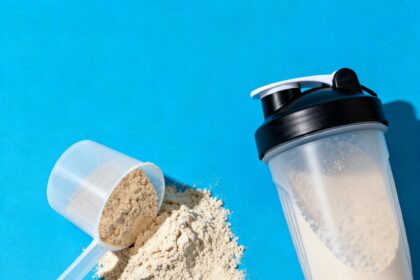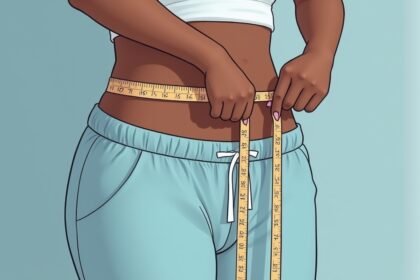You want to build muscle in as little time as possible, and you know exactly how to do it. Or at least you did.
That was before you read a bunch of articles on the subject, all of which say something completely different. Now you’re totally confused about what to do for the best. Read on, and I’ll explain the best way to gain muscle at the fastest rate your genetics will allow. If what you’re doing at the moment isn’t working, please pay attention. What I have to say might be just what you need to get better, faster results. Step one is to decide how many days a week you’re going to train. A lot of muscle-building routines out there are based on the idea that the best way to make your muscles grow is to bomb them into submission once a week with lots of exercises, sets, and reps.
The Best Way to Build Muscle in the Shortest Time Possible
by: Christian Finn
A typical routine might involve chest on Monday, back on Tuesday, shoulders on Wednesday, legs on Thursday and arms on Friday. While some people get decent results with this type of routine, I think there are better options available. When you train a muscle group directly only once a week, protein synthesis is raised for a day or two after the workout. But it’s back to normal 36-48 hours later.3 And simply creating more muscle damage doesn’t appear to make the rise in protein synthesis last any longer.1 What’s more, the rise in protein synthesis after training peaks earlier and returns to normal more quickly in trained versus untrained individuals.9 The upshot is there’s a smaller overall change in muscle protein synthesis in advanced lifters. In other words, when you train a muscle group directly only once per week, the muscles might spend a few days in an “anabolic state” after the workout. But if you leave an entire week between training each muscle group, you’re missing a second (and maybe even a third) opportunity to stimulate growth. Anyone with average genetics who wants to gain as much muscle as they can in the shortest time possible will get better results training each muscle group at least twice every seven days.
BUILD MUSCLE OPTION 1
The first option is to train your whole body three times a week on alternate days, normally Monday, Wednesday, and Friday. Tuesday, Thursday and Saturday or Wednesday, Friday and Sunday will work just as well.
MONDAY WHOLE BODY
TUESDAY OFF
WEDNESDAY WHOLE BODY
THURSDAY OFF
FRIDAY WHOLE BODY
SATURDAY OFF
SUNDAY OFF
BUILD MUSCLE OPTION 2
Option two is to train four days a week using an upper/lower split. You hit the upper body on Monday, lower body on Tuesday, then take Wednesday off. Thursday is upper body, Friday is lower body, and you have the weekend off. Each muscle group is trained twice a week. Of all the training splits I’ve used over the years, this one is my favorite.
MONDAY UPPER BODY
TUESDAY LOWER BODY
WEDNESDAY OFF
THURSDAY UPPER BODY
FRIDAY LOWER BODY
SATURDAY OFF
SUNDAY OFF
BUILD MUSCLE OPTION 3
The third option is something called the push/pull/legs split. You train either four or five days a week, doing the pushing movements (chest, shoulders, and triceps) on Monday and the pulling movements (back and biceps) on Tuesday. Then you take a day off before training legs on Thursday, followed by another day off on Friday. On Saturday you go back to the beginning and do the push workout again.
DAY 1 CHEST, SHOULDERS, TRICEPS
DAY 2 BACK, BICEPS
DAY 3 OFF
DAY 4 LEGS
DAY 5 OFF
So you train for two days, take a day off, followed by one day of training, followed by another day off. Each muscle group is trained every fifth day. Because you don’t train on the same days each week, you’ll need a very flexible schedule to pull this one off. You can also take the upper/lower split and use it to work each muscle group three times over a 7-day period. This way, you train for two days followed by one day off, and just keep repeating the process.
DAY 1 LOWER BODY
DAY 2 UPPER BODY
DAY 3 OFF
DAY 4 LOWER BODY
DAY 5 UPPER BODY
DAY 6 OFF
 The higher frequency of training works well if you have the capacity to recover from the stresses of training five days a week for two weeks out of every three. Not everyone can do it, so approach with caution. While there are literally thousands of different routines available, these are the ones that will pack on the maximum amount of muscle in the shortest possible time. It’s often said that beginners should avoid split routines and stick with full-body workouts that involve working each muscle group three times per week. But as long as their training program and diet are set up correctly, beginners can still make good progress on split routines that involve training 4-5 days per week.
The higher frequency of training works well if you have the capacity to recover from the stresses of training five days a week for two weeks out of every three. Not everyone can do it, so approach with caution. While there are literally thousands of different routines available, these are the ones that will pack on the maximum amount of muscle in the shortest possible time. It’s often said that beginners should avoid split routines and stick with full-body workouts that involve working each muscle group three times per week. But as long as their training program and diet are set up correctly, beginners can still make good progress on split routines that involve training 4-5 days per week.
In one Baylor University study, a group of beginners gained 12 pounds of muscle in just 10 weeks using a 4-day split routine7. A 12-week trial, this time using untrained beginners on a 5-day split routine, shows that guys using milk as a post-exercise supplement gained almost nine pounds of muscle with no additional fat2. In much the same way that beginners can make impressive gains using a split routine, anyone who has moved past the beginner stages of training can still add a substantial amount of size by working their whole body three times a week. University of Alabama researchers, for example, found that a group of men who had been lifting weights for several years gained almost 10 pounds of muscle on a full-body routine performed three days per week for three months4.
The higher frequency of training works well if you have the capacity to recover from the stresses of training five days a week for two weeks out of every three. Not everyone can do it, so approach with caution.
While there are literally thousands of different routines available, these are the ones that will pack on the maximum amount of muscle in the shortest possible time. It’s often said that beginners should avoid split routines and stick with full-body workouts that involve working each muscle group three times per week. But as long as their training program and diet are set up correctly, beginners can still make good progress on split routines that involve training 4-5 days per week.
 But other than your body doing a better job of using the available fibers in a given muscle, the only way to continue to increase the number of reps you can do with a certain weight is for your muscles to get bigger. You won’t always see this increase in muscle size on a daily or even a weekly basis. But it all adds up. And in a few months’ time, you will have more muscle than you have right now. The biggest guys aren’t always the strongest. And the strongest guys aren’t always the biggest. But it’s rare to see an extremely muscular guy who doesn’t also possess a very high level of strength. Make sure to choose compound exercises that allow you to move a large amount of weight. The best exercises in each movement category are as follows:
But other than your body doing a better job of using the available fibers in a given muscle, the only way to continue to increase the number of reps you can do with a certain weight is for your muscles to get bigger. You won’t always see this increase in muscle size on a daily or even a weekly basis. But it all adds up. And in a few months’ time, you will have more muscle than you have right now. The biggest guys aren’t always the strongest. And the strongest guys aren’t always the biggest. But it’s rare to see an extremely muscular guy who doesn’t also possess a very high level of strength. Make sure to choose compound exercises that allow you to move a large amount of weight. The best exercises in each movement category are as follows:
Horizontal push
(flat/30-degree incline barbell bench press, flat/30-degree incline dumbbell bench press, push-ups)
Horizontal pull
(seated row, dumbbell row, inverted bodyweight row)
Vertical pull
(chin-up, close-grip palms-up front lat pulldown, wide grip front lat pulldown)
Vertical push
(standing barbell press, standing dumbbell press, seated dumbbell press)
Lower body quadriceps emphasis
(squat, split squat, leg press)
Lower body hamstrings emphasis
(deadlift, Romanian deadlift, leg curl)
Contrary to a lot of the training advice out there, stimulating gains in size and strength is not an “on-off” phenomenon, and reaching concentric muscle failure is not a requirement for growth.
There are many different set and rep protocols that you can use to build muscle. The one I use and recommend on all the major compound lifts is to ramp up to a single heavy set that is close to, but not quite, an “all out” set. You could probably just about manage another rep, but only if you were to compromise your technique. By ramping up, I mean doing a series of progressively heavier sets until you’re close to the maximum amount of weight you can lift for 5-8 repetitions. Once that set is done, rest for a minute or two. Reduce the weight by 10-20%, and perform another set. Do the same thing again. Then, move on to your next exercise. Combine that with some high repetition sets for the same muscle group, and you’re giving your muscles all the stimulus they need to grow bigger and stronger. There are several reasons why I’m telling you to leave a rep in the tank, rather than going to concentric muscle failure and beyond. Firstly, there is an increased risk of injury the closer you get to failure. Even just a small breakdown in technique, such as excessive rounding of your lower back on the last rep of the squat or deadlift, can lead to an injury that will keep you out of action for some time.
My approach to training has always been to push yourself in your workouts, but do not train to failure,” says former Mr. Universe Bill Pearl. “The last rep should be difficult, but not impossible or unachievable. And I’ve always been a great believer that you should leave the gym each day feeling like you had a great workout, but you’ve still got a little bit left in the gas tank, so to speak.” Probably the most important “trigger” for gains in size and strength is progressive tension overload — lifting more weight over time. But there’s a second stimulus for growth, which you might see referred to as accumulating byproducts of fatigue, pump training, metabolight accumulation, metabolic fatigue, metabolic stress (or some other variation on the theme) depending on who you listen to. Metabolic fatigue is all about “going for the burn” and training in a way that makes your muscles feel like they’re pumped up and about to explode. And there are plenty of different ways to do it.
• You can use multiple sets of a given exercise with moderate-to-high repetitions (10-15) and short (30-60 seconds) inter-set rest periods.
• Tourniquet training (also known as KAATSU or vascular occlusion) has been shown to increase metabolic fatigue by restricting blood flow.
• Drop sets (sometimes known as descending sets or stripping) are also a highly effective way to create a large amount of fatigue in a relatively short period of time.
If you’re feeling mentally and physically fresh, motivated and hungry to train, and you’re consistently gaining strength in the 5 to 15 repetition range on a few basic exercises, you are on a path that will ultimately lead to more muscle. How fast (or slowly) should you perform each repetition? With very few exceptions, extremely slow training speeds offer no significant advantage compared to simply trying to lift a weight as quickly as you can and then lowering it under control.6 If an individual was to use an intentionally slow lifting speed (as opposed to an unintentional one, where the weight you’re lifting and/or muscle fatigue is responsible for slowing you down) the bar wouldn’t come off the ground at all. The only way you can move such a heavy weight is by attempting to do so quickly.
That being said, some exercises are better suited for faster lifting speeds than others. You wouldn’t want to do dumbbell curls with a fast lifting speed, and a clean isn’t really a clean if you’re lifting the bar slowly. Bodyweight movements such as dips, push-ups, inverted rows, and chin-ups, as well as most single-joint exercises, are better done at a slightly slower speed, using a controlled lifting tempo. But for pretty much every other exercise, the proper rep speed for gaining size and strength is to lift the bar with as much force as you can. Then simply lower it under control. There is no need to count the number of seconds it takes to complete each repetition. Just focus on moving the bar from point A to point B and forget about everything else. Blitzing each muscle group with 4-5 different exercises might leave you feeling sore the next day. But that doesn’t mean you’re going to grow any faster. There’s no proven link between soreness and growth, and no rule that says you have to annihilate each muscle group in order to make it grow.8 Despite this, there are plenty of people out there who see soreness as the objective. If my muscles are sore, they think to themselves, the workout must have been a good one. A training session that forms part of a program designed to stimulate some kind of physiological improvement will sometimes leave you feeling sore the next day. But that very same training program will sometimes include workouts that do not produce the same level of soreness.
In other words, muscle soreness isn’t a reliable indicator that a particular workout has been an effective one. When you go to the gym, you are there to train. Most of the other people you see will be there to exercise. There is a difference between the two. “It must be said that not everybody is interested in training,” explains strength coach Mark Rippetoe. “For many, exercise is good enough. They just want to burn some calories, get a little conditioning work, and have better abs. This is fine, for those people. But the second you want more – when you decide that there will now be a goal to accomplish with all this gym time – you’ve graduated to training.”
A total of 20-25 “work sets” per workout (excluding warm-up sets) is more than enough to trigger rapid gains in strength and size. That’s not 25 sets for each muscle, that’s 25 sets in total for the entire workout, divided across 1-3 exercises for each muscle group. There is rarely a need to do more. You will also need to get into the habit of planning your workouts in advance. Before you even set foot in the gym, it’s vital that you know exactly what you’re doing when you get there. If you’re serious about gaining muscle, just “winging it” won’t be good enough anymore. That’s why I highly recommend keeping a training diary. Is what you’re doing delivering results? Or are you doing nothing more than simply repeating the same workout over and over again in the hope that it’ll suddenly start working? It’s also a good idea to include some kind of de-load or light week for every 3-9 weeks of hard training. Yes, I know you’re worried that taking your foot off the gas will leave you smaller and weaker, especially if you’re the type who sees any amount of time off as a wasted opportunity for progress. But your body isn’t a machine and will benefit from a rest now and again, especially as you get older. I know it’s a cliché, but sometimes you do need to take a step back in order to take two steps forward. What you do in the gym is only half the story when it comes to gaining muscle mass.
Without enough food, much of your muscle-building efforts in the gym will go to waste. Here’s a quick and simple way to work out your calorie needs for building size:
1. Firstly, calculate your lean bodyweight. For example, if you weigh 175 pounds at 14% body fat, you have 25 pounds of fat and a lean bodyweight of 150 pounds.
2. Multiply your lean bodyweight by 20. Using a lean bodyweight of 150 pounds, that gives you 3000 calories per day.
If you find that you’re not gaining any weight, increase your calorie intake by around 250 calories per day until the scale starts moving in the right direction. I know that might not sound like much, especially when you compare it with some of the 5000 calorie “bulking” diets out there.
But you can’t force your muscles to grow faster simply by stuffing yourself with food.
That’s because there’s an upper limit on the amount of nutrients you can take in and turn into muscle. If you’re currently eating below this upper limit, then you’ll build muscle faster by increasing your nutrient take. But once you hit your maximal rate of muscle gain, simply adding more calories won’t automatically lead to a faster rate of growth. All that’ll happen is that you get fat. Once you have a decent training and nutrition program set up, the key to building muscle as fast as humanly possible is to stick with it. Frequently, I read that you should keep changing your routine every few weeks to “confuse” your muscles and make them grow. For most people, this is a mistake. There is no point in variety for the sake of variety, and the best way to make absolutely no progress at all is to keep jumping around from one routine to the next. Don’t let anyone try to kid you otherwise. Shawn Phillips put it best when he said that while variety stimulates the mind, it’s consistency that stimulates the muscles. A training program built around a handful of basic exercises will always work well as long as it’s progressed in the right way. The main variables to concern yourself with are sets, reps, training frequency and the amount of weight on the bar rather than the actual exercises you do. There is a time and a place for rotating exercises, but only if it’s part of a structured plan designed to achieve a specific goal. Performing a bunch of random exercises in every workout serves little purpose if you want to get bigger and stronger.
Doesn’t it get boring to use the same exercises all the time? Nothing beats boredom like the feeling that you are moving closer to your goals. When you’re seeing results, getting “bored” with your workouts is rarely a problem. The people who get bored are usually the ones who aren’t making a great deal of progress. Finally, forget about your body type or your genetics. You can’t change them, so there’s no point even thinking about them. Set challenging but realistic goals for yourself and work as hard as you can towards achieving them.
1. Gibala MJ, Interisano SA, Tarnopolsky MA, Roy BD, MacDonald JR, Yarasheski KE, MacDougall JD. (2000). Myofibrillar disruption following acute concentric and eccentric resistance exercise in strength-trained men. Canadian Journal of Physiology and Pharmacology, 78, 656-661 2. Hartman JW, Tang JE, Wilkinson SB, Tarnopolsky MA, Lawrence RL, Fullerton AV, Phillips SM. (2007). Consumption of fat-free fluid milk after resistance exercise promotes greater lean mass accretion than does consumption of soy or carbohydrate in young, novice, male weightlifters. American Journal of Clinical Nutrition, 86, 373-381 3. Kumar V, Atherton P, Smith K, Rennie MJ. (2009). Human muscle protein synthesis and breakdown during and after exercise. Journal of Applied Physiology, 106, 2026-2039 4. McLester JR Jr., Bishop P, Guilliams ME. (2000). Comparison of 1 day and 3 days per week of equal-volume resistance training in experienced subjects. Journal of Strength and Conditioning Research, 14, 273-281 5. Schoenfeld BJ. (2013). Potential mechanisms for a role of metabolic stress in hypertrophic adaptations to resistance training. Sports Medicine, 43, 179-194 6. Tanimoto M, Sanada K, Yamamoto K, Kawano H, Gando Y, Tabata I, Ishii N, Miyachi M. (2008). Effects of whole-body low-intensity resistance training with slow movement and tonic force generation on muscular size and strength in young men. Journal of Strength and Conditioning Research, 22, 1926-1938 7. Willoughby DS, Stout JR, Wilborn CD. (2007). Effects of resistance training and protein plus amino acid supplementation on muscle anabolism, mass, and strength. Amino Acids, 32, 467-477 8. Schoenfeld, BJ, Contreras, B (2013). Is postexercise muscle soreness a valid indicator of muscular adaptations? Strength and Conditioning Journal, 35, 16-21 9. Damas F, Phillips S, Vechin FC, Ugrinowitsch C. (2015). A review of resistance-training-induced changes in skeletal muscle protein synthesis and their contribution to hypertrophy. Sports Medicine, 45, 801-807







































